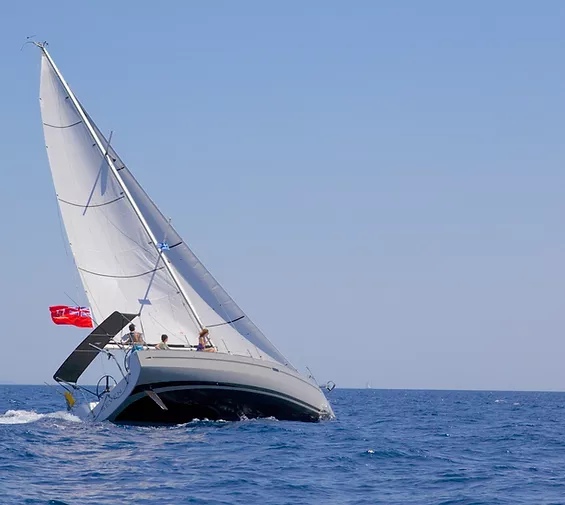 At Kemp Sails, we take pride in building mainsails which perform exactly as they should. That means ensuring accurate measurements, selecting the most appropriate cloth and panel layout, and taking care of every detail of the design and construction.
At Kemp Sails, we take pride in building mainsails which perform exactly as they should. That means ensuring accurate measurements, selecting the most appropriate cloth and panel layout, and taking care of every detail of the design and construction.
We also need to know about your rig, to make sure we incorporate the right amount of luff curve to match the bend in your mast – a particularly important consideration with fractional rigs.
The following features are either standard or available as an option, with most of our mainsails:
- Tell-tails Indicate whether the wind is flowing cleanly off the leech.
- Camber lines Make it easy to see the depth and shape of the sail.
- Lens foot A lightweight panel of cloth along the foot, which substantially increases the sail’s fullness when the outhaul is slackened.
- Leech line exits at reef points Let you eliminate any ‘leech flutter’ when the sail is reefed.
- Luff cunningham Allows you to tension the luff in stronger winds, pulling the draft forward and opening the leech.
- Leech flattener Lifts the boom and flattens the lower section of the sail in heavier conditions.
The following features are either standard or available as an option with most of our mainsails:
- Tell-tails Indicate whether the wind is flowing cleanly off the leech.
- Camber lines Make it easy to see the depth and shape of the sail.
- Lens foot A lightweight panel of cloth along the foot, which substantially increases the sail’s fullness when the outhaul is slackened.
- Leech line exits at reef points Let you eliminate any ‘leech flutter’ when the sail is reefed.
- Luff cunningham Allows you to tension the luff in stronger winds, pulling the draft forward and opening the leech.
- Leech flattener Lifts the boom and flattens the lower section of the sail in heavier conditions.
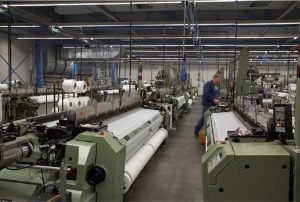
Cloth
We’ll recommend the cloth which best matches the panel layout. For example, a low aspect-ratio sail has very different stress patterns to one with a relatively longer luff.
When the luff/foot ratio exceeds 3:1, we recommend the use of high-tenacity fabrics designed specifically for minimal stretch in sails with high leech loads. Other types of commonly-used cloth cost less, which may explain why some quotations are lower than ours. But for a stable, long-lasting shape, you won’t get away with cutting corners or using inferior fabrics. That’s why we always suggest comparing quotations on a like-for-like basis.
And if there’s anything you don’t understand about the spec we suggest , please ask. We’ll be happy to explain exactly why we’ve made a particular recommendation.
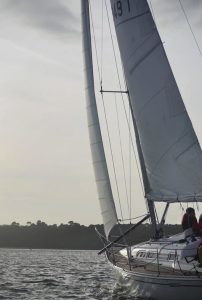
Panel Layout
The sail’s size and aspect-ratio, plus your budget and intended use, determine whether we suggest a cross-cut or radial layout. Radial designs are more expensive because they’re more complex to make, and need specialised types of cloth (see separate page on radial sails)
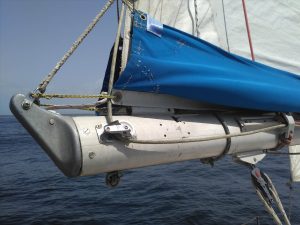
loose foot at clew
One of the most crucial elements in a neat reef is having the leech lines in the right place on the boom. Some older types of boom have attachment points on the bottom or side – but, if these aren’t accurately positioned in relation to the leech cringles, you’ll end up with an untidy, inefficient reef.
Our solution is to remove the bolt rope from the last few feet ahead of the clew slider, so you can pass the leech lines under the foot and secure them around the boom. This way, they’ll be able to slide to the best position automatically when the load comes on. Another example of simple, sensible solutions from Kemp.

reefing points
Unless you have cockpit-controlled reefing, we can offer ‘reef spectacles’ on the luff cringles for easier attachment to the tack horn. And at the outer end of the boom, we leave the last few feet of the sail loose-footed, so you can loop the reefing lines between the boom and sail. See opposite for more detail of both these features.

battens
Two-ply batten pockets ensure no part of the batten is in direct contact with a load-bearing part of the sail. Tapered, glassfibre battens in Velcro-fastened pockets are standard on our Racing, Performance Cruising and Cruisemaster sails.

reef spectacles
The most difficult part of reefing can be forcing the luff cringle down over the tack horn – and then finding you’ve hooked it on upside-down. But there’s no struggling with a Kemp sail, thanks to our ‘reef spectacles’ – stainless steel rings on the end of a strong webbing strap which passes through the luff cringle. Hooking on is quick and easy, so you spend minimal time on deck.

bolt ropes or luff sliders
Up to the size where a bolt rope creates too much friction, you have a choice – a rope for optimum performance, or sliders for easy handling.
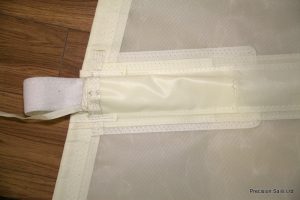
velcro-fasten batten pockets
To hold the battens firmly in place with minimal weight and clutter at the leech, we use Velcro ‘hookand- loop’ flaps, whose hooks fasten to the loops on the insides of the pockets. The flaps are pushed in with a flat, glass fibre ‘prodder’, which also keeps the hooks and loops apart. Then, when the ‘prodder’ is withdrawn, the flaps attach themselves along their entire length, making it virtually impossible for the batten to escape by accident.
